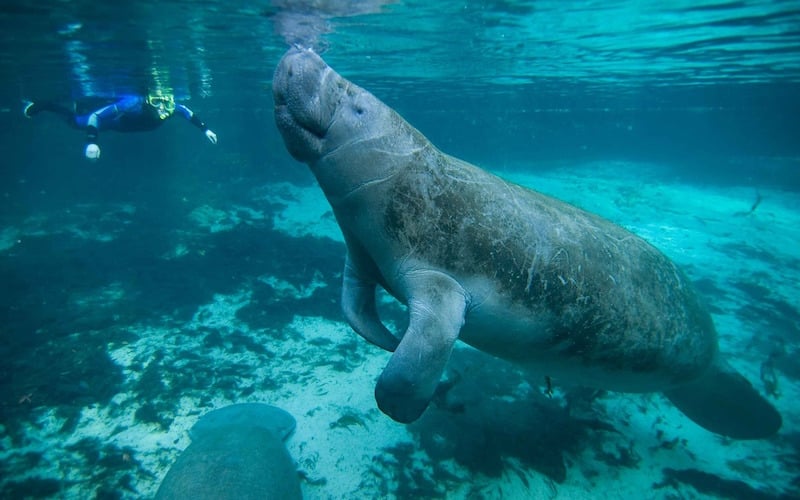Manatees in Aquariums
There aren’t nearly as many manatees in captivity as most people think. In fact, they tend to be a very calm and gentle animal that is able to adapt to a variety of changes in their environment. The majority of them that do end up in captivity have been injured due to boating collisions or other problems. They would otherwise have died in their natural environment which is why rescue efforts for them were put into place.
Many calves are rescued from death too because of events with their mother. She many have died or been injured and the chance of the calf surviving alone is very low. In some cases the calves aren’t cared for by their mothers but this is very rare. When these younger manatees are taken into captivity they can survive and that means we are one more step closer to seeing them avoid extinction.
There are quite a few zoological entities around the world that strive to protect the manatees. They have some in captivity to help them survive, to conduct research, and to educate the public about the needs of these animals. Both the Sea World in Florida and the one located in California are dedicated to rescuing manatees that are in need. This includes those that are injured, sick, lost, or have become orphans. They try to return as many of them to the wild as they possibly can.
Those that can’t be released back into the wild will be able to live out the remainder of their life in a controlled environment. Many of the females in captivity won’t mate for many years. It is believed this is due to the stress of the change. Others believe that it is due to the female not being able to engage in the migration process as it may trigger the additional hormones for mating to occur.
The biggest problem with bringing manatees into captivity is the cost of caring for them. Many of these locations bring them in though with the desire to heal them and allow them to return to the wild. In order to do that they have to keep human interactions to a minimum. They also need to offer a controlled environment that is as similar to the real thing as they possibly can.
The fact that so many of these manatees would die without temporarily being in captivity though is important to remember. Others would surely die if they were returned to the wild so it is best to keep them in captivity for the rest of their lives. A great deal of the funding to care for them in captivity comes from Federal grants, non profit organizations, and the donations of concerned individuals that want to offer the manatee the best chance of survival possible.
Without the dedication of volunteers as well as paid professionals, the manatee in captivity program wouldn’t have been possible. Neither would the chance many have of them to be returned to the wild.
One of the changes for a manatee in captivity is their diet. Instead of feeding off of huge amounts of plant life, they are given a diet of mainly lettuce along with a few green plants. They are also given elephant vitamins. This is because in the wild a manatee will consume up to 9% of its body weight in food each day. They do so because there isn’t a high amount of nutrients in the foods they consume. In captivity these elephant pills help them to get full on less food. It also helps them to get all of the nutrients that they need without the same volume of food.







